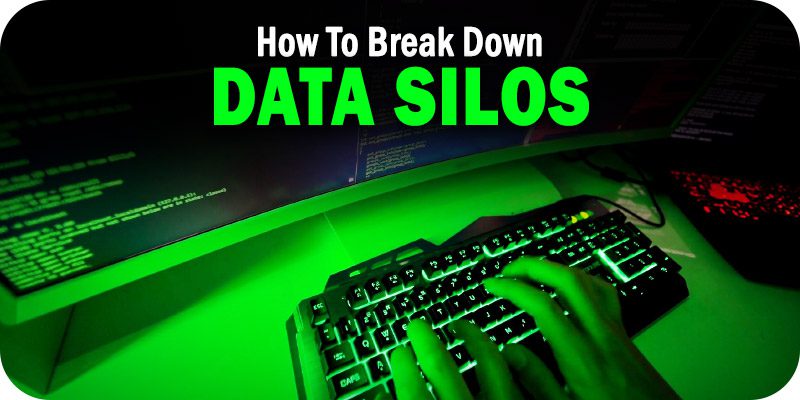Walkthrough: How to Break Down Data Silos by Establishing Connections


This is part of Solutions Review’s Premium Content Series, a collection of contributed columns written by industry experts in maturing software categories. In this submission, Boomi Chief Innovation Officer Ed Macosky walks you through the process of how to break down data silos by establishing connections.
 While we may feel that we’re living in an increasingly connected world, technology could actually be making us more disconnected; changes brought on by the COVID-19 pandemic blurred the lines even more. With the near extinction of the traditional workplace, today’s business leaders are faced with a new challenge: connecting the hybrid and remote workforce while still conducting business as usual. Organizational silos that existed in the office are now exacerbated and new ones are emerging thanks to everything from supply chain disruptions to growing skill disparities in our workforce and society. Then, there’s the elephant in the room – data silos, which can kill digital transformation.
While we may feel that we’re living in an increasingly connected world, technology could actually be making us more disconnected; changes brought on by the COVID-19 pandemic blurred the lines even more. With the near extinction of the traditional workplace, today’s business leaders are faced with a new challenge: connecting the hybrid and remote workforce while still conducting business as usual. Organizational silos that existed in the office are now exacerbated and new ones are emerging thanks to everything from supply chain disruptions to growing skill disparities in our workforce and society. Then, there’s the elephant in the room – data silos, which can kill digital transformation.
The Cost of Data Silos
Siloed data creates barriers to information sharing and collaboration across departments. Silos can also cause the quality of data to suffer when information stored in disparate databases becomes out of sync over time. This can negatively impact numerous departments if the poor quality data overlaps multiple silos. While individual departments within an organization may operate separately, they should also be interconnected and work together, but this isn’t always possible if there are data silos creating barriers to collaboration.
Additionally, data silos can cost an organization a lot of money and create inefficiencies within a business. Rather than running one process, users are forced to run the same processes multiple times. For example, businesses that use an application programming interface (API) and an electronic data interchange (EDI) system ultimately have created two data silos. While both systems do different things and address different business needs, gaining a high-level overview of the data within each and being able to compare it across systems is important for improving visibility over supply chains. When the systems and their data are siloed, this is difficult. But when an EDI system is integrated with APIs, organizations can gain visibility over data flows from vendors, suppliers, distributors, partners, and marketplaces to simplify processes and trade smarter.
In short, disparate data across different applications slows down everyday business operations, posing visibility issues – no one knows where the data is or if it’s even there. Silos also make it difficult for organizations to harness their data to inform critical decision-making.
Centralizing Data is Only the First Step
While eliminating all data silos is the objective, it’s often not a reality. Breaking down or decreasing the number of silos within business units is a more realistic goal. Centralizing data through a data lake or data warehouse model is often the first step and offers a strong foundation for data management. However, it can’t be the end goal because having a high quantity of centralized data doesn’t necessarily translate to visibility or high-quality data. Rather than thinking strictly in terms of data centralization, in light of today’s distributed workforce, organizations should be focusing on delivering integrated experiences and increasing automation while breaking down the data silos.
Breaking Down the Silos
Customers, partners, and suppliers are in one silo (or potentially three different silos); cloud platforms and software-as-a-service (SaaS) are two more, then throw social media applications and mobile devices into a hybrid landscape with packaged and custom apps and databases – and the end result is often a big mess. The very technologies promising to connect us are actually erecting new barriers.
Through low code, cloud-based technologies, organizations today have the capability to take disparate data silos and integrate them via intelligent connectivity and automation services. Adding artificial intelligence (AI) and machine learning (ML) to automation can speed up the process, identifying patterns and creating smarter automations that can evolve and change on-the-fly – something known as hyper-automation. Businesses can then leverage this intelligent automation to eliminate silos and establish secure, seamless, and up-to-date information on every piece of data. They can also use it to create a standardized process of preparing and cleansing data, and build workflows and user engagement mechanisms to automate other business processes. Leaders can use the practice of hyper-automation and their now siloless data to extract valuable insights from across the business’ entire digital ecosystem.
Change Management
A final consideration when breaking down silos is change management. Though the way processes operated previously may not have been ideal, it may be what employees have grown accustomed to. Sometimes an organization’s culture can inadvertently promote data silos, so to successfully break them down it’s important to incorporate change management best practices. Communicate with employees about the benefits of data sharing and data integrity – not only how it benefits the company as a whole, but how it can help them in their roles by streamlining processes and creating better outcomes.
Solving Problems and Creating Solutions
Once an organization has centralized its data, connected all of its disparate silos, and won the buy-in of employees, it can concentrate on the real issues at hand: solving problems and creating solutions for its customers. It can expedite project timelines, and grow and scale daily operations with a better handle on its data. Businesses can also see real results through faster, more streamlined operations.
Data management is no longer simply about moving data between systems. Organizations must evolve to connect with their end-users, employees, and customers – no matter where they are. And, they must do it fast and in real-time – today’s digital world is moving at record speeds.
The last two-plus years have been all about change. Preparing for the unexpected and boldly facing the pace of change is no easy feat especially when it comes to protecting our assets and data. With so many obstacles standing in our way, our data shouldn’t be one of them. Eliminating as many silos as possible can streamline business processes, enhance information flow, improve operational efficiency, and give peace of mind to customers and employees so we can all connect and thrive in today’s digital age.





















